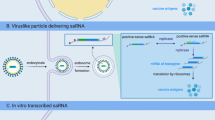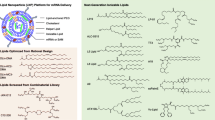Abstract
Objectives
To examine the potential of exosomes derived from the tumor cells, which had been genetically modified to express a Mycobacterium tuberculosis antigen, as a cancer vaccine aimed at overcoming the weak immunogenicity of tumor antigens.
Results
We transfected B16 melanoma cells with a plasmid encoding the M. tuberculosis antigen, early secretory antigenic target-6 (ESAT-6). The secreted exosomes bearing both tumor-associated antigens and the pathogenic antigen (or their epitopes) were collected. When the exosomes were injected into foot pads of mice, they significantly (p < 0.05) evoked cellular immunity against both ESAT-6, and B16 tumor cells. Intra-tumoral injection of the exosomes significantly suppressed (p < 0.001) tumor growth in syngeneic B16 tumor-bearing mice, while the exosomes derived from the non-transfected B16 cells showed no effect on tumor growth, although both exosomes should have similar tumor antigens.
Conclusions
Exosomes bearing both tumor antigens and the M. tuberculosis antigen (or their epitopes) have a high potential as a candidate for cancer vaccine to overcome the immune escape by tumor cells.






Similar content being viewed by others
References
André F, Schartz NEC, Chaput N, Flament C, Raposo G, Amigorena S, Angevin E, Zitvogel L (2002a) Tumor-derived exosomes: a new source of tumor rejection antigens. Vaccine 20:A28–A31
André F, Schartz NEC, Movassagh M, Flament C, Pautier P, Morice P, Pomel C, Lhomme C, Escudier B, Le Chevalier T, Tursz T, Amigorena S, Raposo G, Angevin E, Zitvogel L (2002b) Malignant effusions and immunogenic tumour-derived exosomes. Lancet 360:295–305
Chiang CL-L, Coukos G, Kandalaft LE (2015) Whole tumor antigen vaccines: where are we? Vaccines 3:344–372
Cohen CJ, Gartner JJ, Horovitz-Fried M, Shamalov K, Trebska-McGowan K, Bliskovsky VV, Parkhurst MR, Ankri C, Prickett TD, Crystal JS, Li YF, El-Gamil M, Rosenberg SA, Robbins PF (2015) Isolation of neoantigen-specific T cells from tumor and peripheral lymphocytes. J Clin Invest 125:3981–3991
Dai S, Wei D, Wu Z, Zhou X, Wei X, Huang H, Li G (2008) Phase I clinical trial of autologous ascites-derived exosomes combined with GM-CSF for colorectal cancer. Mol Ther 16:782–790
de Jonge MI, Pehau-Arnaudet G, Fretz MM, Romain F, Bottai D, Brodin P, Honoré N, Marchal G, Jiskoot W, England P, Cole ST, Brosch R (2007) ESAT-6 from Mycobacterium tuberculosis dissociates from its putative chaperone CFP-10 under acidic conditions and exhibits membrane-lysing activity. J Bacteriol 189:6028–6034
de Leon J, Jiang G, Ma Y, Rubin E, Fortune S, Sun J (2012) Mycobacterium tuberculosis ESAT-6 exhibits a unique membrane-interacting activity that is not found in its ortholog from non-pathogenic Mycobacterium smegmatis. J Biol Chem 287:44184–44191
Duan F, Duitama J, Al Seesi S, Ayres CM, Corcelli SA, Pawashe AP, Blanchard T, McMahon D, Sidney J, Sette A, Baker BM, Mandoiu II, Srivastava PK (2014) Genomic and bioinformatic profiling of mutational neoepitopes reveals new rules to predict anticancer immunogenicity. J Exp Med 211:2231–2248
Filipazzi P, Bürdek M, Villa A, Rivoltini L, Huber V (2012) Recent advances on the role of tumor exosomes in immunosuppression and disease progression. Semin Cancer Biol 22:342–349
Gorman C, Padmanabhan R, Howard BH (1983) High efficiency DNA-mediated transformation of primate cells. Science 221:551–553
Gubin MM, Zhang X, Schuster H, Caron E, Ward JP, Noguchi T, Ivanova Y, Hundal J, Arthur CD, Krebber WJ, Mulder GE, Toebes M, Vesely MD, Lam SS, Korman AJ, Allison JP, Freeman GJ, Sharpe AH, Pearce EL, Schumacher TN, Aebersold R, Rammensee HG, Melief CJ, Mardis ER, Gillanders WE, Artyomov MN, Schreiber RD (2014) Checkpoint blockade cancer immunotherapy targets tumour-specific mutant antigens. Nature 515:577–581
Hamada K, Yoshihara C, Ito T, Tani K, Tagawa M, Sakuragawa N, Itoh H, Koyama Y (2012) Antitumor effect of chondroitin sulfate-coated ternary granulocyte macrophage-colony-stimulating factor plasmid complex for ovarian cancer. J Gene Med 14:120–127
Ito T, Yoshihara C, Tanaka NI, Koyama Y (2008) Efficient in vivo gene transfection by stable DNA/PEI complexes coated by hyaluronic acid. J Drug Target 16:276–281
Ito T, Yoshihara C, Hamada K, Koyama Y (2010) DNA/polyethylenimine/hyaluronic acid small complex particles and tumor suppression in mice. Biomaterials 31:2912–2918
Ito T, Koyama Y, Otsuka M (2014) Preparation of calcium phosphate nanocapsule including deoxyribonucleic acid-polyethyleneimine-hyaluronic acid ternary complex for durable gene delivery. J Pharm Sci 103:179–184
Johnstone RM (2006) Exosomes biological significance: a concise review. Blood Cells Mol Dis 36:315–321
Koyama Y, Yoshihara C, Ito T (2015a) Novel antitumor strategy utilizing a plasmid expressing a Mycobacterium tuberculosis antigen as a “danger signal” to block immune escape of tumor cells. Pharmaceutics 7:165–174
Koyama Y, Sugiura K, Yoshihara C, Inaba T, Ito T (2015b) Highly effective non-viral antitumor gene therapy system comprised of biocompatible small plasmid complex particles consisting of pDNA, anionic polysaccharide, and fully deprotected linear polyethylenimine. Pharmaceutics 7:152–164
Ledwith BJ, Manam S, Troilo PJ, Barnum AB, Pauley CJ, Griffiths TG 2nd, Harper LB, Beare CM, Bagdon WJ, Nichols WW (2000) Plasmid DNA vaccines: investigation of integration into host cellular DNA following intramuscular injection in mice. Intervirology 43:258–272
Pathak SK, Basu S, Basu KK, Banerjee A, Pathak S, Bhattacharyya A, Kaisho T, Kundu M, Basu J (2007) Direct extracellular interaction between the early secreted antigen ESAT-6 of Mycobacterium tuberculosis and TLR2 inhibits TLR signaling in macrophages. Nat Immunol 8:610–618
Smith J, Manoranjan J, Pan M, Bohsali A, Xu J, Liu J, McDonald KL, Szyk A, LaRonde-LeBlanc N, Gao LY (2008) Evidence for pore formation in host cell membranes by ESX-1-secreted ESAT-6 and its role in Mycobacterium marinum escape from the vacuole. Infect Immun 76:5478–5487
Valenti R, Huber V, Iero M, Filipazzi P, Parmiani G, Rivoltini L (2007) Tumor-released microvesicles as vehicles of immunosuppression. Cancer Res 67:2912–2915
Wang J, Wang L, Lin Z, Tao L, Chen M (2014) More efficient induction of antitumor T cell immunity by exosomes from CD40L gene-modified lung tumor cells. Mol Med Rep 9:125–131
Wolfers J, Lozier A, Raposo G, Regnault A, Théry C, Masurier C, Flament C, Pouzieux S, Faure F, Tursz T, Angevin E, Amigorena S, Zitvogel L (2001) Tumor-derived exosomes are a source of shared tumor rejection antigens for CTL cross-priming. Nat Med 7:297–303
Yang Y, Xiu F, Cai Z, Wang J, Wang Q, Fu Y, Cao X (2007) Increased induction of antitumor response by exosomes derived from interleukin-2 gene-modified tumor cells. J Canc Res Clin Oncol 133:389–399
Yang C, Kim S-H, Bianco NR, Robbins PD (2011) Tumor-derived exosomes confer antigen-specific immunosuppression in a murine delayed-type hypersensitivity model. PLoS ONE 6:e22517
Yoshihara C, Hamada K, Kuroda M, Koyama Y (2012) Oncolytic plasmid: a novel strategy for tumor immuno-gene therapy. Oncol Lett 3:387–390
Zhang Y, Luo CL, He BC, Zhang JM, Cheng G, Wu XH (2010) Exosomes derived from IL-12-anchored renal cancer cells increase induction of specific antitumor response in vitro: a novel vaccine for renal cell carcinoma. Int J Oncol 36:133–140
Acknowledgments
Authors are grateful to Prof. Hideo Nariuchi for his kind and important advices. This work was supported by JSPS KAKENHI Grant Numbers 25350555 and 16K01394.
Author information
Authors and Affiliations
Corresponding author
Rights and permissions
About this article
Cite this article
Koyama, Y., Ito, T., Hasegawa, A. et al. Exosomes derived from tumor cells genetically modified to express Mycobacterium tuberculosis antigen: a novel vaccine for cancer therapy. Biotechnol Lett 38, 1857–1866 (2016). https://doi.org/10.1007/s10529-016-2185-1
Received:
Accepted:
Published:
Issue Date:
DOI: https://doi.org/10.1007/s10529-016-2185-1




